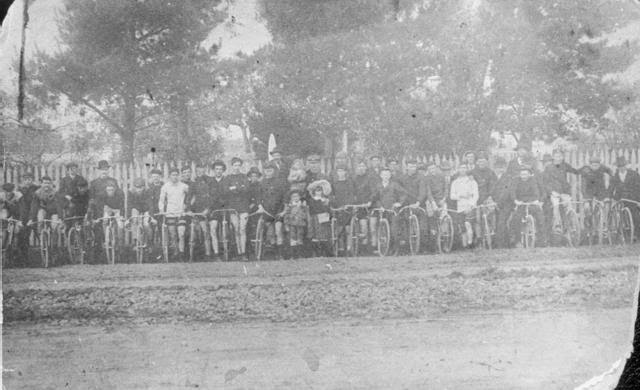The Fleiner family of Coburg: another story demonstrating the interconnectedness of things.
While I was
researching the Coburg Art Festivals of the 1940s, I came across a reference to
a James Fleiner who played an ocarina solo in the Coburg
Branch of National Theatre Movement’s production of ‘Variety Steps Out’ in 1948.
Curious, I looked a little further and found
that Jim Fleiner had a hairdresser’s shop at 579 Sydney Road, Coburg. He used
to make films and show the films in his shop. He also ‘played the tin whistle
for his young customers.’ (Broome, Coburg
between two creeks, p.306)
Image of Jim Fleiner’s
hairdresser’s shop in about 1938.
Image courtesy Coburg Historical Society.
Arthur Whitbread and James
Fleiner (on right) at corner of Waterfield and Bell St Coburg, 1923.
Image courtesy Coburg Historical Society.
Jim’s brothers Fred and Leslie served in the 1st
AIF.
5096 Private Frederick Thomas Fleiner, 14th Infantry Battalion.
Frederick (Freddie) Fleiner, a labourer, enlisted on 21 January
1916 aged 18. He had been born in Albury, NSW in 1895 but his parents Phillip and
Mary moved to 12 Linda Street, Coburg where they lived from at least 1909 until
the death of his father in 1916 while he and his brother were on active service.
Frederick attended Moreland State School and his name is found in several
Coburg typed lists of names connected with the Coburg Roll of Honour, although
his name is not listed there. He died in 1982 at Heidelberg.
669 Private Leslie Fleiner, 31st Infantry Battalion.
Leslie Fleiner, a bookmaker’s clerk, enlisted on 12 July 1915 aged 21 years 10 months. Like
his younger brother Freddie, he had been born in Albury, NSW but was educated
at Moreland State School while the family was living in Linda Street, Coburg. On his return to Australia in June
1918 with a severe shell wound to his forearm, he lived with his widowed mother
for a time at 115 Bell Street, Coburg.
And, as is the way in all research, the Fleiner family were
connected with another World War One soldier from the area. Jim Fleiner, our
ocarina playing hairdresser, married Louisa Johnston, sister of Donald (Don) William
Johnston who served in A Company, 7th Battalion and left with the
first contingent. Don was killed in action on the Gallipoli
Peninsula on 8 May 1915.
Don
was the son of Andrew Johnston of the Thistle Cyle Shop (and later the Coburg Motor
Garage) at 288-290 Sydney Road, Coburg where he built his own ‘Thistle’ brand
bicycles. A stalwart of the Coburg Cycling Club, Andrew Johnston ‘fostered
cycling in Coburg, trained various elite cyclists and was president of the club
for the 15 years to 1920,’ according to descendant Barb Wilcock. Donald was a
member of the Coburg Cycling Club and would have participated in many of the
cycling and social activities sponsored by the club.
Thistle Cycle Club Outing to Campbellfield, c.1903.
Image
courtesy Coburg Historical Society.






















